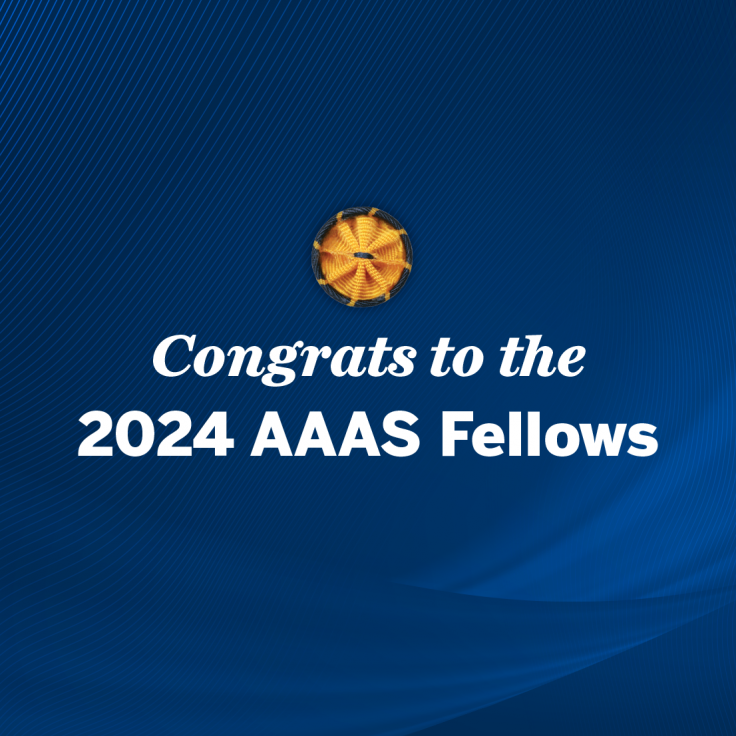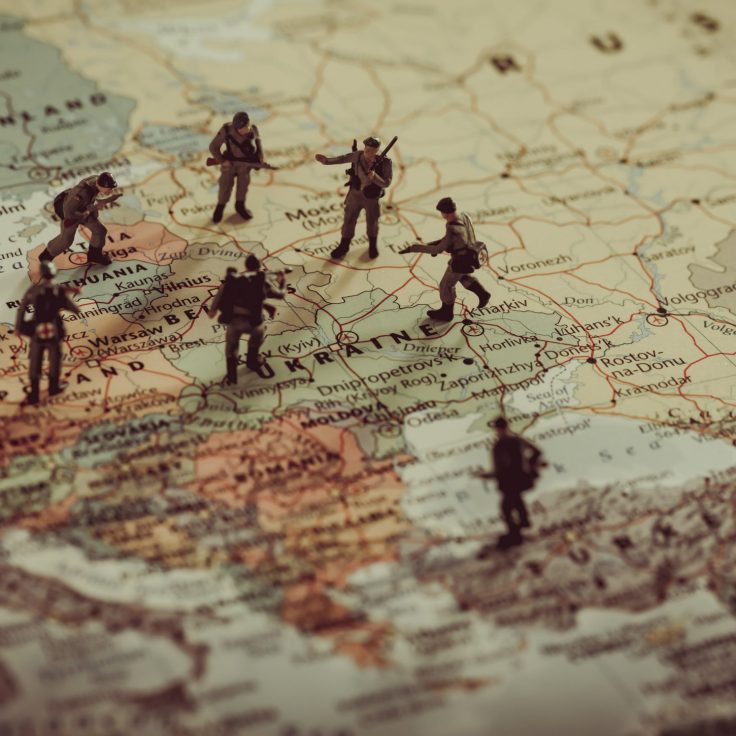
Michael McDonald. Photo by Michel Thomas.
UF Election Lab is national resource for early election data
In 2020, 24 states offered citizens the option to cast their votes before Election Day. In 2024, 47 states offered early voting, either in-person or through mail-in ballots. With an estimated 57% of votes cast before Nov. 5, early voting is on the rise.
From the opening of polling locations in September through Election Day, Michael McDonald, professor of political science, maps, tracks, and predicts early voter turnout data. This continually updated information has become an in-demand resource for media outlets, polling organizations and researchers throughout the nation.
A popular podcast guest, interview subject for NBC, Fox News, and C-SPAN Washington Journal, and an often-quoted source for publications like The New York Times, The Washington Post, and the Associated Press, McDonald is a star when it comes to voter turnout data collection.
“One of the things that I do is I calculate the turnout rates for the country, and many people view those turnout rates as the most accurate of those who are eligible to vote,” McDonald said. “So, they get used pretty widely. They’re in lots of textbooks. The Minnesota Secretary of State uses it as their official turnout rate. And many other places use the turnout rates for their own internal purposes.”
McDonald regularly updates his findings on the UF Election Lab website, which draws students, community members, and alumni far and wide. The site’s popularity predictably grows as early November draws near, and typically crashes with over 1 million unique hits on Election Day alone. In 2024, the election lab site had 554,000 visitors, with 17 million page views.
The UF Election Lab has tracked early voter turnouts since 2008. McDonald’s research team, The Voting and Election Science Team (VEST), produces the only source of nationwide precinct boundary data enhanced with precinct election results for recent U.S. elections.
During the 2024 election cycle, multiple media clients, such as The Wall Street Journal and Politico, purchased data from the lab for use in the election coverage. Leading up to the election, this early voting data was mirrored by The New York Times, The Washington Post, and CBS. As one of the only people doing early voting analysis, McDonald is often referenced on numerous platforms leading up to each election.
“This data is another indicator of the status of the horse race,” he said. “It’s a story where a lot of Americans are doing something together, they are casting ballots, and so it’s an activity worthy of following along for that purpose as well.”
Studying polling numbers has historically been used as a determining factor by major news networks to call races before official polling numbers are released. From the birth of the first national exit poll conducted in 1972 by CBS, a new art form began in the political science community: analyzing turnout and determining how numbers can sway races.
Especially in a state like Florida, which was long considered a “swing state,” people coming out to the polls can truly be the deciding factor of even top ticket races. In 2000, Florida was won by George W. Bush by a margin of only 537 votes and became the deciding race for the entire country.
Despite not being considered a battleground state in the 2024 election, Florida’s diverse and constantly growing population has its own unique outlooks ahead of the election cycle. Yet McDonald does not limit himself to one state’s early polling numbers, but rather does a cross-comparison of data throughout the country, meaning with 50 equally distinct states, his job during election season is truly never-ending.
By analyzing early voting polling rather than exit polling, McDonald can get ahead of the curve and report on election predictors while there is still time for individuals to vote. The election patterns captured while polling is still open shows how elections can change over time and fluctuate leading up to Election Day.
“The number of early voters has been steadily increasing,” McDonald said. “There’s a chart on the UF Election Lab site that has long-term trends. 2020 was an aberration because of the pandemic. About half the ballots that were cast in 2020, were cast by mail. In 2022, though, we reverted to the long-term upward trend in early voting. I expect that trend to continue as we project out what that trend would look like.”
Leading up to Election Day, the UF Election Lab website features an interactive map providing the user access to data showing how many ballots have already been cast in each state and in all precincts. The site then breaks down the data by the demographic markers of party affiliation, age, gender, and race/ethnicity of all those who have cast an early ballot throughout the country.
“It’s a story where a lot of Americans are doing something together, they are casting ballots, and so it’s an activity worthy of following along for that purpose as well.”
– Michael McDonald
The site currently has data for the 2024, 2020, and 2016 presidential cycles and the 2022 midterm elections. McDonald hopes the data can continue to be a resource utilized by the political science community far and wide for years to come. As of the end of October, McDonald predicted 48% to 50% of 2024’s votes would be cast prior to Election Day. Initial reports in mid-November had that number closer to 57%.
“As another part of the work that we do at this point with the early voting data, because there’s so much early voting going on the weekend before the election, I will be forecasting what the turnout will be, and then all the major media organizations will be using that forecast to project out what they think will be the outstanding vote now updated after election, of course, with the actual numbers as we start getting them in,” McDonald said.
In 2020, McDonald published “Pandemic to Insurrection: Voting in the 2020 Presidential Election,” which explained early voting, how it works, and the political battles that surrounded voting in the 2020 election.
“Not surprisingly, since 2020 there’s been a decrease in the number of people who are using mail ballots,” he said. “In 2020, it was primarily Democrats casting mail-in ballots and now we’re seeing considerably fewer Democrats voting by mail this cycle than we did just four years ago. At the same time, we’re also seeing Republicans who in 2020 if they did vote early, they were voting later in the early voting period or they were just voting on Election Day.”
This time around, McDonald said due to Republican politicians promoting in-person early voting, there has been an uptick in the demographic voting early that has previously not been seen.
“We can clearly see that Republicans are voting much earlier in the in-person early voting period than they did in 2020, and that’s tending to change how we might analyze what’s going on in this election,” he added. “What does it mean for the election? It’s important. I mean, for example, in Nevada, the Republican National Committee has decided to invest in Nevada kind of late in the game, but they see what they think are going to be favorable, in person early voting numbers, and they want to capitalize on that to try to win Nevada and win the Senate election. So, it changes how this data is used. These numbers are of interest to the media, but they’re also of interest to the campaigns.”
But the results of the election lab are also used to reach beyond peer-reviewed journals, political groups, and national news organizations. Wednesday mornings in the fall, a small classroom across from the Marston Library comes alive with students of data science to journalism, eager to hear more about McDonald’s findings. McDonald encourages questions and makes meaningful connections between the data he is analyzing and current events transpiring in the media. By including students in the conversation, he has inspired many to take on the mantle of their own research projects, continuing his work outside the barriers of a typical classroom.
“I teach this election data science course which analyzes election data, specifically the individual level data that some states make available, that I use for the early voting to track the early voting activity,” he said.
“But there’s also lots of individual data, so I teach students how to use that data, how to analyze it, how to understand its properties, so that they can do their own research on it. This is all being informed by the data that I’m analyzing and collecting, and then I can share that with students for their various projects that they’re working on.”


